Nabra Nelson: Salam Alaikum. Welcome to Kunafa and Shay, a podcast produced for HowlRound Theatre Commons, a free and open platform for theatremakers worldwide. Kunafa and Shay discusses and analyzes contemporary and historical Middle Eastern and North African, or MENA, and Southwest Asian and North African, or SWANA, theatre from across the region.
Marina Johnson: I’m Marina.
Nabra: And I’m Nabra.
Marina: And we are your hosts.
Nabra: Our name, Kunafa and Shay, invites you into the discussion in the best way we know how: with complex and delicious sweets like kunafa and perfectly warm tea, or in Arabic, shay.
Marina: Kunafa and Shay is a place to share experiences, ideas, and sometimes to engage with our differences. In each country in the MENA or SWANA world, you’ll find kunafa made differently. In that way, we also lean into the diversity, complexity and robust flavors of MENA and SWANA Theatre. We bring our own perspectives, research, and special guests in order to start a dialogue and encourage further learning and discussion.
Nabra: Welcome to the fifth season of Kunafa and Shay, where we delve into the dynamic world of performance art across the region. We’re highlighting the creative, innovative, and artistic disruption of performance artists, exploring how their art serves as a powerful medium for expression and social change. This season features interviews with performance artists who challenged norms and use their craft to further conversations about topics like identity, diaspora, homeland, and futurity.
Marina: This episode features Tania El Khoury, a live artist who creates interactive installations and performances that reflect on the production of collective memory and the cultivation of solidarity. Her work is activated by tactile, auditory, and visual materials collected and curated by the artist and her collaborators ultimately transformed through audience interaction. El Khoury’s work engages questions of displacement border systems, privatization and the politics of space in how they’re shaped through nation-building projects and colonial legacies.
Nabra: Tania El Khoury is a live artist and the director of the Center for Human Rights and the Arts, as well as a distinguished artist in residence in the theatre and performance program at Bard College. Since 2017, Tania has co-curated two editions of the Fisher Center LAB Biennial, both featuring commissions of her own artistic work. Her work has been translated into multiple languages and shown globally in spaces ranging from national museums to fishing boats. She’s the recipient of the Herb Alpert Award, the Bessie Outstanding Production Award, Soros Art Fellowship, International Live Art Prize, Total Theatre Innovation Award, and Arches Brick Award. She’s co-founder of Dictaphone Group, an urban research and live art collective in Lebanon.
Tania holds a PhD in Performance Studies from Royal Holloway, University of London. Her publications include The Search for Power and Gardens Speak (Tadween Publishing); “Camp Pause: Stories from Rashidieh Camp and the Sea” (Jadaliyya); “Performing the Arab” (Kohl: A Journal for Body and Gender Research); “The Scenography of The Revolution,” “Two Live Artists in the Theatre,” and “Swimming in Sewage, Political Performances in the Mediterranean” (all in Performance Research); and “We Are All Witnesses: The Arab Spring in Photos and Electronic Wars,” as well as “Spaces and Bodies in Arab Revolutionary Art” (both in Journal of Palestine Studies).
Tania teaches performance, live art and spatial justice, audience interactivity, and the intersection of art and activism.
Marina: Hi, Tania. It’s so good to be in the recording room with you. Thank you so much for joining us today. We’re big fans of your work.
Tania El Khoury: Marhaba. Thank you so much. I’m excited to be with you,.
Marina: So in your bio that we just read, you described yourself, and we described you, as a live artist. Can you describe–what is live art? What is your understanding of that and how would you describe it to someone who may not know what that is?
Tania: Live art means art that is simply consumed live. So that’s kind of the easy way to say, it is very much centered on liveness, on encounter with an audience. I really like that term because it’s generated in the UK where I studied and practiced live art for a while. And it generated by artists of color who found themselves a little bit marginalized from performance art, which they understood as gallery-centric and also white practice of art. And live art is described by many people and I recommend people to read the description of Live Art Development Agency, which is a brilliant agency kind of based in London, and they have various ways of describing live art.
But the one that stuck with me is a fact that it’s a research engine, that it’s kind of a practice that resists description in a kind of traditional way. You can really use it as an umbrella term under which you create performance, you also create video art, video performances, you create interactive sound installations, et cetera. And the most important part of it is that it’s always innovative. It always really bends artistic form in a way that will fit the content in a way that will fit the focus of the work. And second is the fact that it’s just really centered on that encounter with the audience.
Nabra: That’s really exciting to hear. I think both Marina and I think about all of that as in theatre, but thinking about this greater umbrella term that can also allow for multidisciplinary arts forms is very exciting. And I’d never heard that term before, so I’m excited to use it now.
Tania: Yeah. So for people who don’t know, I’ve recently moved to New York. I am based at Bard College right now as an artist in residence, and I also direct the Center for Human Rights and the Arts. And I remember when I moved here, someone sat me down and said, “There is no live art in the US. Stop saying you’re a live artist. If anything here you are a visual artist.” Just because I actually come from theatre, I’ve studied theatre all my life, I did the BA, MA, even PhD in theatre, but I never created work for the stage. If you’re interested, I’m happy to give you my reasoning why I never created work for the stage or why I felt kind of, I don’t know, kind of moved away from it. But yeah, so I was told that perhaps, as I am more of a visual artist, funnily enough.
Nabra: I think we need new terms, especially multidisciplinary and more broader terms are so needed for artists working today that I think are expanding the idea of what any one given art form is.
Tania: Totally.
Nabra: And because we of course, are mainly a theatre podcast, we would absolutely love to hear why you did not do work for the stage. I’m very curious.
Tania: The story began… I come from a working-class family in Lebanon, and I came once to my parents as a seventeen-year-old and announced that I will be going to a theatre school for my BA. And I remember my father said, “What? Not only none of us come from theatre, we don’t even watch theatre.” I remember feeling like, “Ohh yeah, we don’t watch theatre.” But so, I think relationship in a lot of places that theatre is a little bit elitist. This is kind of people who come from marginalized places or areas that are not really centered in the capital, don’t really grow up watching theatre. And in my university studies and the public college in Lebanon, the theatre also had this kind of intellectual vibe to it. And I was very politicized at the time. I was really involved in, or I was focused on being, on trying to be an activist and questioning everything around us.
And I remember feeling that the practice is actually very bourgeois. The fact that we are there performing on a stage for the middle and upper classes to entertain them, it’s not something that I wanted to do. So from the beginning I wanted the audience to be somehow involved. I wanted the relationship to be more horizontal. So from those politics I found myself creating interactive works that are also immersive, without even knowing that word in English. At the time I didn’t even spoke English. I’m French-educated, I learned a bit of English, but not after I actually traveled and start touring and I lived in London that I realized that this actually exists as a form, something that I did very naturally and kind of organically.
I wanted to bend that relationship between the audience and the fourth world, bend it and create work that puts the audience and the performers or the art in direct conversation, have been practiced by many other people. So since then I only created work that is interactive that really think about audience interactivity as a form, but also as a politics. So, what happens to the audience when they find themselves in the work? What is that gives them in terms of responsibility? So they’re not just spectating, but they’re witnessing. They are part of the work they carry in their bodies after they leave.
I think oral history by itself cultivates solidarity because we know a lot about event as kind of a big headlines and grand narratives. When we attempt to look at history from below and look at ordinary people’s stories within those major events, this by itself kind of cultivates a different solidarity
Nabra: Absolutely. That’s really exciting to hear, to give a deeper idea of what that work looks like… And we’ll link it, of course, there’s a lot of documentation on your website, which I really appreciate for those of us who have not yet experienced that work in person.
But can you talk about maybe what you’re currently working on or a favorite piece or something that’s kind of in your mind these days?
Tania: Sorry, I always laugh about the idea of favorite piece ’cause it feels like I love them all the same. They’re all my children. Funnily enough, I get asked this question often and I’m like, “What do you mean I have a favorite?”
I’m currently touring. I’m currently touring works that… Some of my works have been touring for a decade, and others are more recent. So I just toured my most recent work called Memory of Birds. And this is an interactive piece that invites the audience to lay down in a structure around a tree and they kind of hug the tree while they’re lying down in that structure and listen to a sound piece that takes them through kind of a story about bird migration, but also the different toxicity and political violence that are hidden in the soil, and really thinking about the soil as this body of the earth that holds a lot of those traumas.
It is a collaboration that I did with a trauma therapist who will guide the audience as well with a voice in that piece and invite you to have the spatial awareness of a bird and to just become one with that landscape. It’s a very gentle piece, a gentle experience. Gives you that moment to be with the tree with the bird and then kind of disappear. I’m also touring another work, one of the most recent work called Culture Exchange Rate, and this piece I did at the beginning of the economic collapse that is currently happening in Lebanon. So really it reflects on our relationship with money and currency, especially working-class people and families. It also follows my own family history for about a whole century of people’s relationship to money currency and also their relationship to migration and border crossing. So we come from a border village between Lebanon and Syria and I talk about how my grandmother, my late grandmother, how she is older than the colonial border and never really took seriously that border and always kind of crossed it as people do.
And then about a brief migration to Mexico City, brief within the century of history. And as part of this work, I go to Mexico and I meet some of our lost relatives there and attempt to find traces of my family there. So this is a piece also, it’s kind of immersive. It invites you to open. It is really set that has lots of cabinets and as an audience you have a set of keys and you open cabinets and kind of stick your head in those cabinets. And every cabinet has a total different… We can think of them as scenes since we’re discussing theatre, but they’re really various elements. And it’s multisensory: there’s smell, there’s sound, there’s kind of vibration. Sometimes there’s taste, the tactile, and you are really digging in the personal archive, the collective archive, but also state archive. So I found a lot of the immigration cards of people who migrated in the twenties and start looking through them to find my great-grandfather. And then link that to conversation that we have over WhatsApp with my family trying to understand if this is the one who is our great-grandfather or not. And so there is humor in it, but there’s also stories of survival and border crossing and economic collapses.
Nabra: And they experience all of that through this installation. It’s opening each of these cupboards or is there a person there, or how do people learn about all these elements and stories?
Tania: So a lot of these work function without performers, but I still do think of them as a performance, as in it’s the audience who become the performer. Of course, some of my works do actually have performers in them—I perform in them or other performers I collaborate with on—but there are, these two pieces that I mentioned, it’s the audience who activate them. So you could think of them as installations that get activated by the audience, and they are time-based, so they really have a beginning and an end, and audience follow set of instructions. I often work with audience guides, and these audience guide are there to kind of support the audience, but also set the mood for the piece and relay the instructions.
Marina: I love this so much, and I hope that I get to experience one of your pieces in person someday soon. So you talked a little bit about how some of these ideas might come to be. In the last instance it was really thinking about the colonial borders and family experiences, but also what is archived in the records and how can we combine this with stories that you’ve been told with the actual tactile of keys, which I find really provocative. I’m sure that every piece is very different from where you get the idea to how it progresses, but how do you usually go about fostering an idea from when you have it to it sort of becoming something in which an audience can interact with it?
Tania: This is a great question actually because this kind of taps on the crucial element of live art or the live art that I personally create or I’m interested in. It’s the fact that the form does not need to abide by any rule, by any sort of set relationship, which a more traditional theatre has to often abide by, like kind of an audience sitting passively in the dark, a stage manager, a light designer, etc. This type of work really gives you the potential of recreating its rules every time you create work. and that’s what I’m really interested about. It feels very, very open. So I often think about the form and the content or my political motivation, really they start together. So I’ll give you an example of for example, Gardens Speak, which is one of the pieces that I toured the most. I created in 2013 in Lebanon and then started touring from 2014.


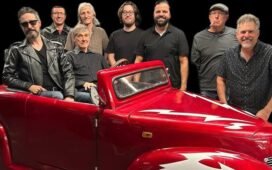
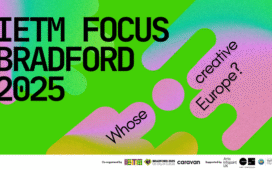
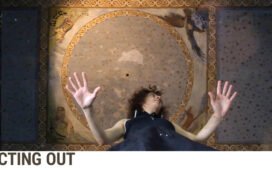
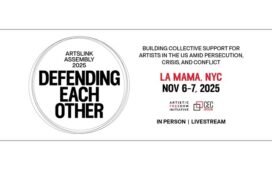
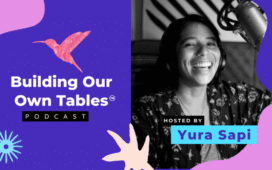
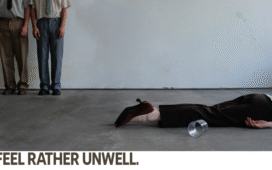
Recent Comments